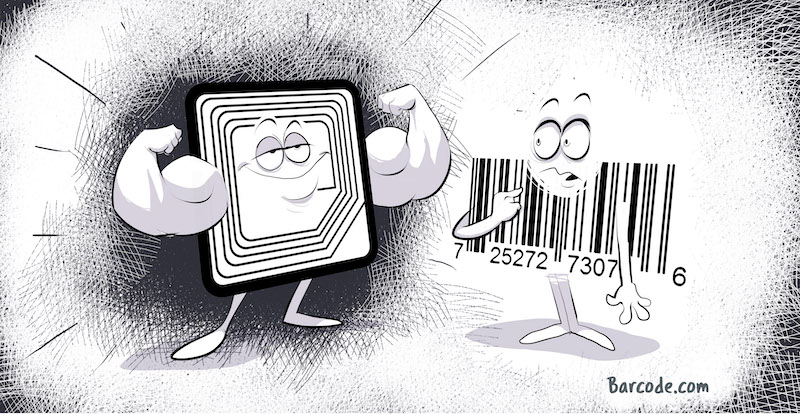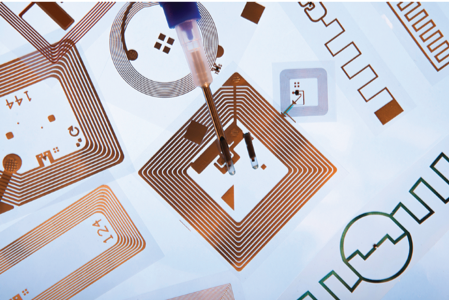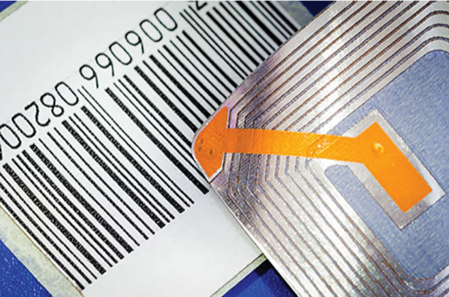Why RFID May Be Better than Barcode for Critical Manufacturing
 Manufacturing is the lifeblood of modern industry, and entire nations depend on its success every day. The manufacturing process is often driven by computer tracking technology. Specifically, critical applications like finished goods, safety, maintenance or assets depend on accurate tracking. The ability to monitor the production process, control costs, prevent lost items or even safeguard workers depends on it.
Manufacturing is the lifeblood of modern industry, and entire nations depend on its success every day. The manufacturing process is often driven by computer tracking technology. Specifically, critical applications like finished goods, safety, maintenance or assets depend on accurate tracking. The ability to monitor the production process, control costs, prevent lost items or even safeguard workers depends on it.
In these instances, you want the very best technology to safeguard your processes. This is why an RFID based system from a reliable vendor might be the better choice over a barcoding solution. What are the advantages of RFID? Let's take a look.
RFID Is Not Limited by Line of Sight
Reading a barcode is an optical process, which means that it is limited by direct line of sight. If the barcode reader cannot see the barcode directly, then successful reads are not going to happen. 
On the other hand, RFID is not limited by line of sight. As long as the RFID tag is within range of the reader, it can be read with success. The orientation of the target is inconsequential, as is intervening material between the tag and the reader.
Why is this important? Well, if for any reason line of sight is lost, a barcode becomes non-functional. There could be any number of reasons for this to happen, from misplaced manufacturing material to simple human error. The last thing you want is a line to be down over something as simple as a loss of line of sight.
RFID Tags Have Greater Range than Barcode labels
Sometimes in a manufacturing process, it is essential to know where something is even when it shouldn't be there in the first place. RFID tags can give you this kind of information because they have a much greater range than a barcode. In most cases, you can quickly detect all tags in a given area as a matter of routine function.
Barcode readers are typically confined to a scanning area. If the barcode is out of range for a given scanner, you are not going to be able to find it.
RFID Tags Can Be Read in Bulk, Making Them Faster Than Barcodes
Consider the scenario where you have a cart loaded with up to 40 trackable objects. If they are tagged with RFID, the tags on the cart can be scanned simultaneously as they pass a reader, allowing tracking information to be stored. However, if they all use barcodes, each barcode symbol must be read one at a time. The cart would have to come to a complete standstill and let the process finish before the tracking information could be collected. This lost time could be costly during manufacturing.
On top of that, the cart would have to be designed to allow line of sight access to all barcodes. This could limit the number of items the cart could carry, and possibly even require the design of specialized carts for proper item positioning. Such a system might prove to be expensive to set up and maintain.
RFID Tags Are Read and Write
 Barcodes are read-only, and the interpretation of their data usually depends on the backend. In comparison, RFID tags can not only be read, but they can store data as well. Sophisticated manufacturing processes, especially those that may require items to travel between different systems, can use and change that stored state to correctly identify and direct the goods without requiring a backend to cross-reference.
Barcodes are read-only, and the interpretation of their data usually depends on the backend. In comparison, RFID tags can not only be read, but they can store data as well. Sophisticated manufacturing processes, especially those that may require items to travel between different systems, can use and change that stored state to correctly identify and direct the goods without requiring a backend to cross-reference.
This state can also be used to verify the system's expectation, serving as a checkpoint and potentially avoiding a disaster. Storing varying state directly on a barcode is impossible without replacing the barcode itself.
RFID Holds More Information
RFID systems are able to store much more information than traditional barcodes. If you need to track basic information, barcodes and RFID are comparable. Information such as in-stock versus out of stock, or generic product data like name, SKU or manufacturer can be included in either solution.
However, if you need to track a greater variety of information, RFID may be the answer. Details such as product maintenance, shipping histories and expiration dates can all be tracked using RFID. This data comes into play also, when considering real-time reporting. As the saying goes, begin with the end in mind. Considering upfront what data you want to have access to once your project is up and running could help you decide between barcoding and RFID.
RFID is More Durable
 As barcodes rely on line-of-sight, they must be placed on the outside of the item. Depending on the environment, this could be problematic.
As barcodes rely on line-of-sight, they must be placed on the outside of the item. Depending on the environment, this could be problematic.
In areas where the labels are exposed to humidity, sunlight or abrasion, there is a risk of the barcode becoming damaged and, therefore, unreadable. However, specialty label stocks are available to meet these challenging environmental applications. In contrast, RFID is available in many form factors including labels or tags, made of a range of materials from paper labels to durable hard plastics.
As you can see, there are many benefits to using RFID tags over barcodes. This is especially true it when it comes to mission-critical manufacturing lines where mistakes could be costly.
However, it’s important to keep in mind some instances when barcodes have the advantage. The initial expense of RFID tags can be a little higher than their barcode counterpart. Also, barcodes do not have limitations on the type of products they can be applied to.
RFID, too, has its limitations. RFID may struggle to read information when passing through liquid or metal. In addition, the signal from one reader can interfere with the signal from another where coverage overlaps. This is called reader collision.
Choosing the right data collection method for your warehouse depends on many factors. You should consider the type of items to be tracked and your specific warehouse environment and workflows. In fact, many environments warrant using a mix of barcoding and RFID solutions to achieve the desired result. An experienced software vendor can help you decide if RFID solutions are the right choice for your operations.
Wendy Stanley is Marketing Director for Radley Corporation, a leading developer of productivity software. Radley offers configurable and scalable Bar Code Data Collection, RFID solutions, Inventory Control, EDI, Asset Tracking and Traceability software solutions. Since 1974, Radley Corporation has helped over 600 customers in 30 countries streamline workflows and automate processes.
